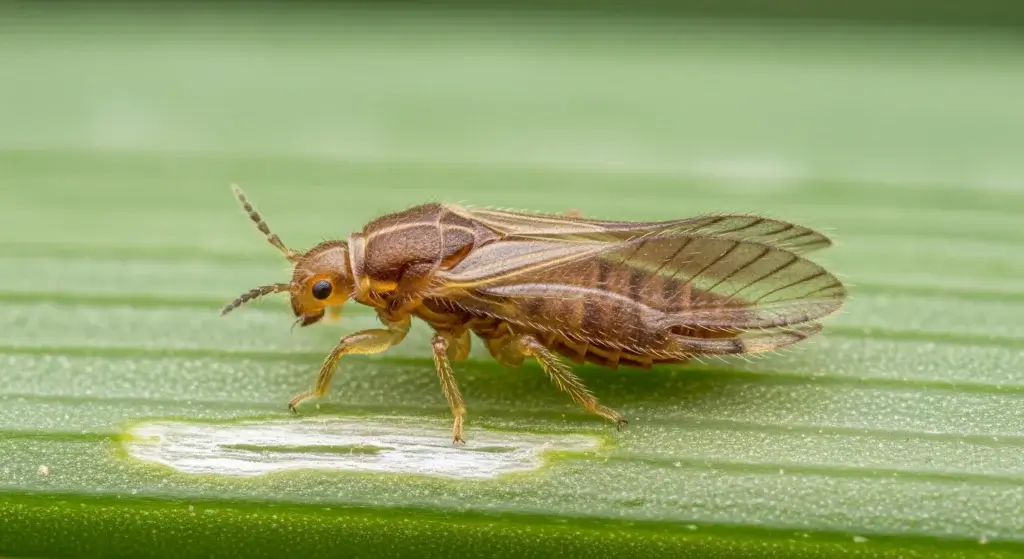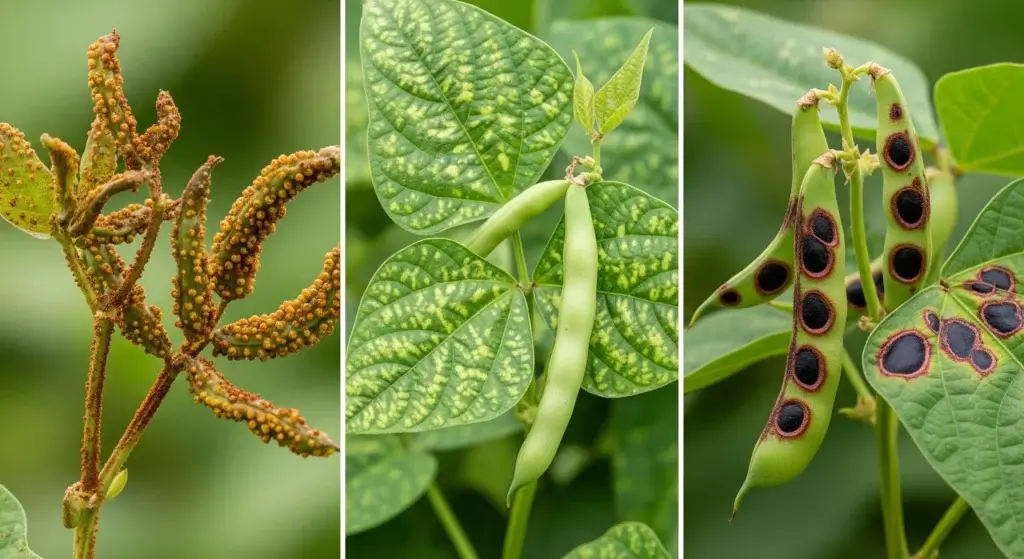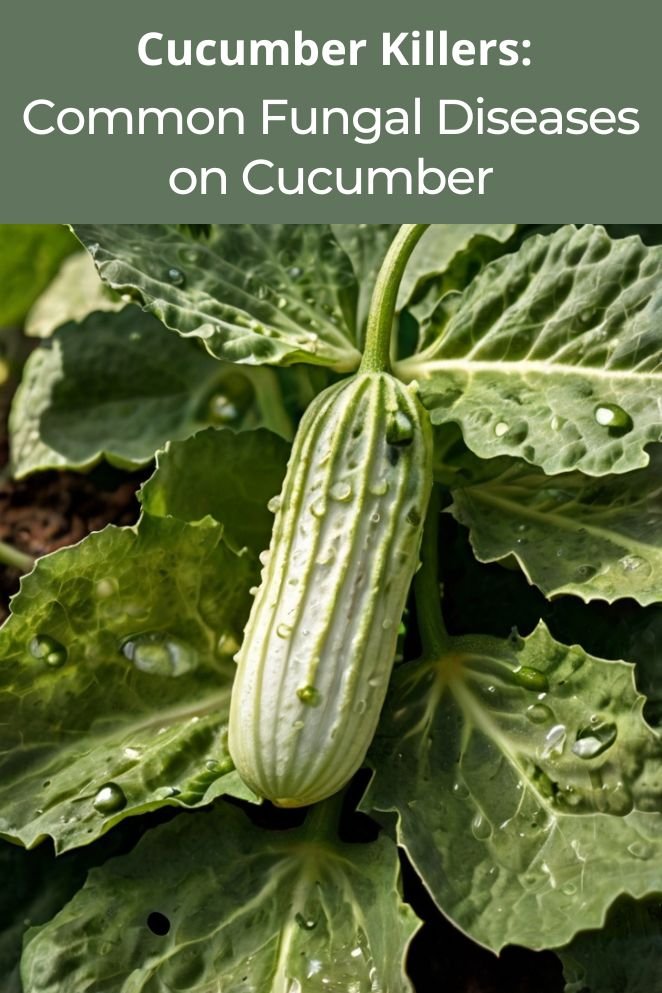
Cucumbers are a favorite in many gardens, prized for their crisp texture and refreshing taste.
However, like all plants, cucumbers are susceptible to diseases, particularly fungal infections.
These diseases can significantly impact yield and quality, making it essential for gardeners to understand how to manage them effectively.
This blog post will explore the common fungal diseases affecting cucumbers and provide practical tips on how to control them.
Fungal Diseases on Cucumber
Fungal diseases are among the most common problems faced by cucumber plants.
Here are some of the most prevalent ones:
Powdery mildew
Powdery mildew, caused by the fungi Podosphaera xanthii and Erysiphe cichoracearum, appears as white, powdery spots on cucumber plants’ leaves and stems.
Initially, these spots may be small, but they can rapidly expand, covering entire leaves and stems.
This disease thrives in warm and dry conditions with low humidity. Unlike many other fungal infections, powdery mildew doesn’t rely on wet conditions to spread.
It often becomes more prevalent in late summer.
As the disease progresses, infected leaves turn yellow, wither, and eventually drop off.
This process weakens the plant and can lead to reduced fruit yield and quality.
- Read also: Beat the Blight: Identifying Fungal Diseases of Eggplant
- Read also: Fungal Diseases of Beans: Identification, Prevention, and Control
Downy mildew
Downy mildew, caused by the fungus Pseudoperonospora cubensis, is identifiable by yellow spots on the upper surfaces of cucumber leaves.
These spots often form angular shapes, delimited by leaf veins.
Beneath the leaves, a grayish-purple mold may be observed.
This disease thrives in cool and moist conditions.
It spreads swiftly in wet environments, especially during periods of heavy dew or prolonged rainfall.
Downy mildew can result in significant leaf loss, reducing photosynthesis and hindering plant growth.
Left untreated, it has the potential to devastate an entire cucumber crop.
Anthracnose
Anthracnose, caused by the fungus Colletotrichum orbiculare, results in the formation of dark, sunken lesions on cucumber plants’ leaves, stems, and fruits.
These lesions typically appear circular and may have a tan center surrounded by dark margins.
The disease spreads rapidly in warm and wet weather conditions.
High humidity and rainfall create perfect environments for the fungal spores to proliferate and infect plants.
Severe infections can lead to substantial crop losses. Fruits affected by anthracnose develop sunken, dark spots, rendering them unsuitable for sale.

Alternaria leaf blight
Alternaria leaf blight, caused primarily by the fungus Alternaria alternata, manifests as small, brown spots on leaves with concentric rings, resembling targets.
Typically, these spots first appear on older leaves and then spread upward.
This disease thrives in warm, humid conditions, often becoming more prevalent during wet seasons or when plants are subjected to overhead irrigation.
The consequences of Alternaria leaf blight can be significant, including defoliation, which weakens the plant and diminishes its vigor.
Consequently, affected plants may produce smaller yields and be less productive overall.
Gummy stem blight
Gummy stem blight, caused by the fungus Didymella bryoniae, results in the formation of lesions on the stems, leaves, and fruits of affected plants.
Notably, the lesions on the stems may produce a gummy substance, giving the disease its name.
Leaves can exhibit water-soaked spots that later turn brown and dry up.
The spread of gummy stem blight is encouraged by warm and wet weather conditions.
Factors such as poor air circulation and prolonged leaf dampness also contribute to its development.
This disease is particularly concerning because it affects various parts of the plant.
Severe infections can lead to significant yield losses, and fruits may become unsellable due to the presence of lesions.
Gray mold (Botrytis rot)
Gray mold, caused by the fungus Botrytis cinerea, leads to water-soaked lesions on stems, leaves, flowers, and fruits.
These infected areas often develop a fuzzy, gray mold.
Fruits affected by this disease can show soft, brown, and water-soaked spots, which frequently result in fruit rot.
This fungus thrives in environments with high humidity and poor air circulation.
Prolonged wetness of leaves due to rain, dew, or irrigation also encourages its growth.
Gray mold can significantly reduce yields by damaging both fruits and foliage.
It also impacts the marketability of produce due to the cosmetic damage and rot it causes.
Belly Rot
Belly rot, caused by the fungus Rhizoctonia solani, manifests as water-soaked lesions on the undersides of fruits that are in contact with the soil.
These lesions gradually enlarge, become sunken, and turn dark brown or black.
Leaves affected by the fungus may develop small, irregular brown spots.
Fruits that touch moist soil are particularly susceptible to this disease.
Warm temperatures and high soil moisture levels create ideal conditions for infection.
This disease reduces marketable yield by causing fruit rot.
Losses tend to be more severe in areas with poor soil drainage or insufficient mulch coverage.
Cercospora Leaf Spot
Cercospora leaf spot, caused by the fungus Cercospora citrullina, results in the formation of small, round to irregular spots on leaves.
These spots appear light brown to grayish with dark borders.
Over time, they may merge to form larger necrotic areas, leading to premature leaf drop.
While the fruits themselves are not directly affected, their quality can decline due to reduced photosynthesis.
The disease thrives in warm, humid conditions with frequent leaf wetness, which are often facilitated by frequent rainfall or overhead irrigation.
Significant reduction in the photosynthetic area can occur, resulting in stunted growth and lower yields.
Moreover, severe defoliation can expose fruits to sunscald.
Fusarium Wilt
Fusarium wilt, triggered by the fungus Fusarium oxysporum f. sp.
Cucumerinum, leads to the yellowing of leaves, typically starting from the older leaves and advancing upwards.
Vines may wilt, particularly noticeable during the hottest parts of the day.
Additionally, browning and discoloration of the vascular tissue in stems occur.
The fungus can survive in soil and plant debris for extended periods.
It thrives in warm soil conditions and can spread in moist soils, although it doesn’t necessarily require high moisture levels.
This disease causes significant yield losses as affected plants wilt and eventually die.
Managing it can be challenging due to the fungus’s persistence in the soil.
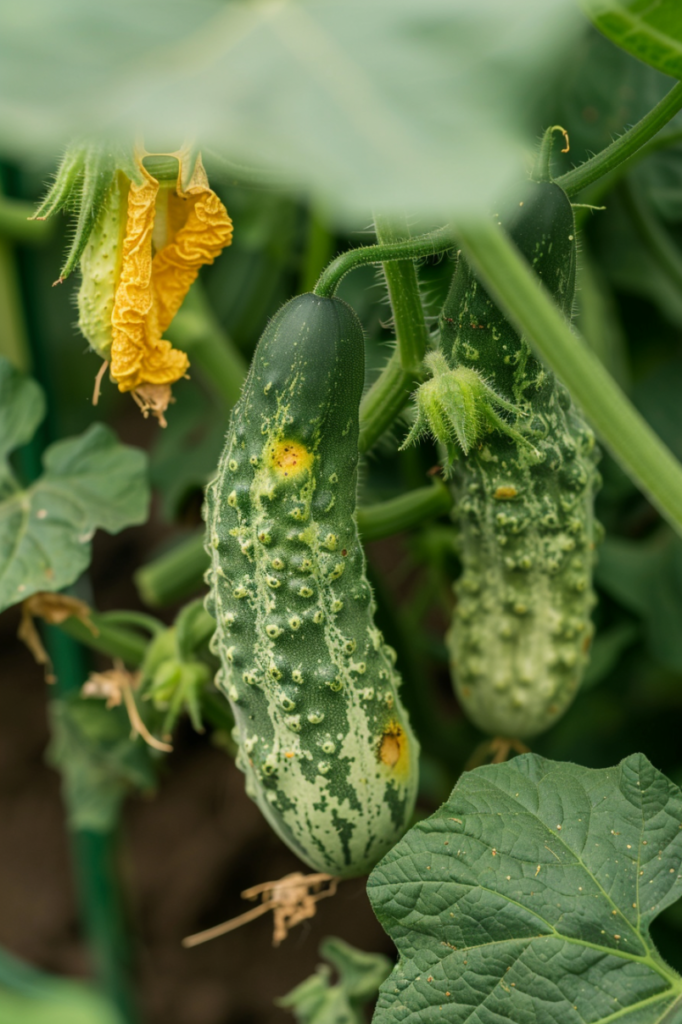
How to Control Fungal Diseases on Cucumber
There are two main approaches to fight fungal diseases on cucumbers: prevention and control. Here’s how to tackle both:
Stage of prevention
- Start with strong plants: Choose disease-resistant cucumber varieties whenever possible. Healthy plants are naturally more resilient to fungal infections.
- Practice good garden hygiene: Rotate your crops each year to avoid harboring fungal spores in the soil. Clean and disinfect your gardening tools regularly to prevent spreading diseases between plants. Remove plant debris from the previous season and don’t add diseased plant material to your compost pile.
- Optimize growing conditions: Provide proper air circulation by avoiding overcrowding plants. Water deeply at the base of the plant to avoid wetting the leaves. Fungal diseases thrive in cool, moist environments, so aim for good air flow and avoid overwatering.
Stage of control
- Early detection is key: Regularly inspect your cucumber plants for signs of fungal diseases. The sooner you identify the problem, the easier it is to manage.
- Cultural practices: Once you have a fungal disease, isolate infected plants to prevent spreading. Remove and destroy infected leaves, stems, or fruits. Improve air circulation around your plants by thinning or pruning if needed.
- Fungicides: If the infection is severe, you may need to use a fungicide. Opt for organic options like copper fungicide or sulfur fungicide first. Always follow the application instructions on the label carefully. Remember, prevention is key, so fungicides should be a last resort.
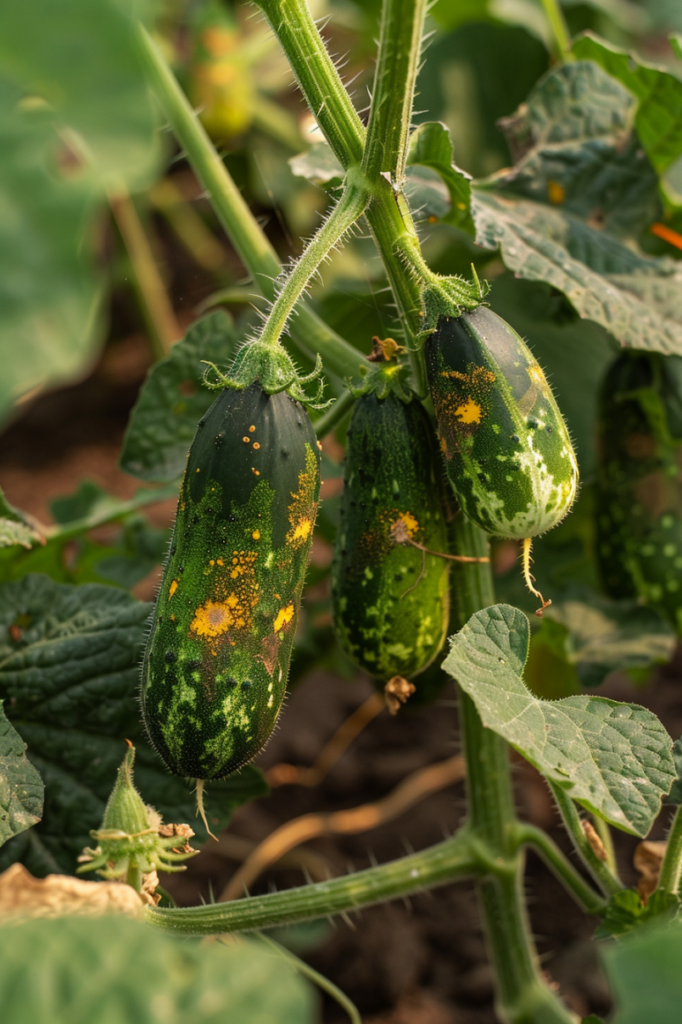
- Read also: Beat the Bugs: A Guide to Controlling Cucumber Beetles
- Read also: The Natural Weapon: Using Neem Oil For Cucumber Beetles
Conclusion
Fungal diseases can pose a significant threat to cucumber crops, but with proper management, their impact can be minimized. Remember, the key to controlling fungal diseases is early detection.
So, it is crucial to identify what fungal diseases that affect your plants.
By combining the prevention stage and control stage, you can minimize the impact of this fungal and enjoy a bountiful cucumber harvest.
FAQs
Yes, some fungal diseases affecting cucumbers can also infect other plants in the cucumber family (Cucurbitaceae), such as squash, pumpkins, and melons. Proper sanitation and isolation of infected plants can help prevent the spread to other crops.
Yes, it’s advisable to remove and dispose of infected cucumber plants to prevent the spread of fungal spores to healthy plants. Dispose of infected plant material in the trash or by burning, rather than composting.
Fungal diseases often thrive in humid, wet conditions with moderate temperatures. Ensuring good air circulation and keeping the foliage dry can help reduce the risk of infection.

